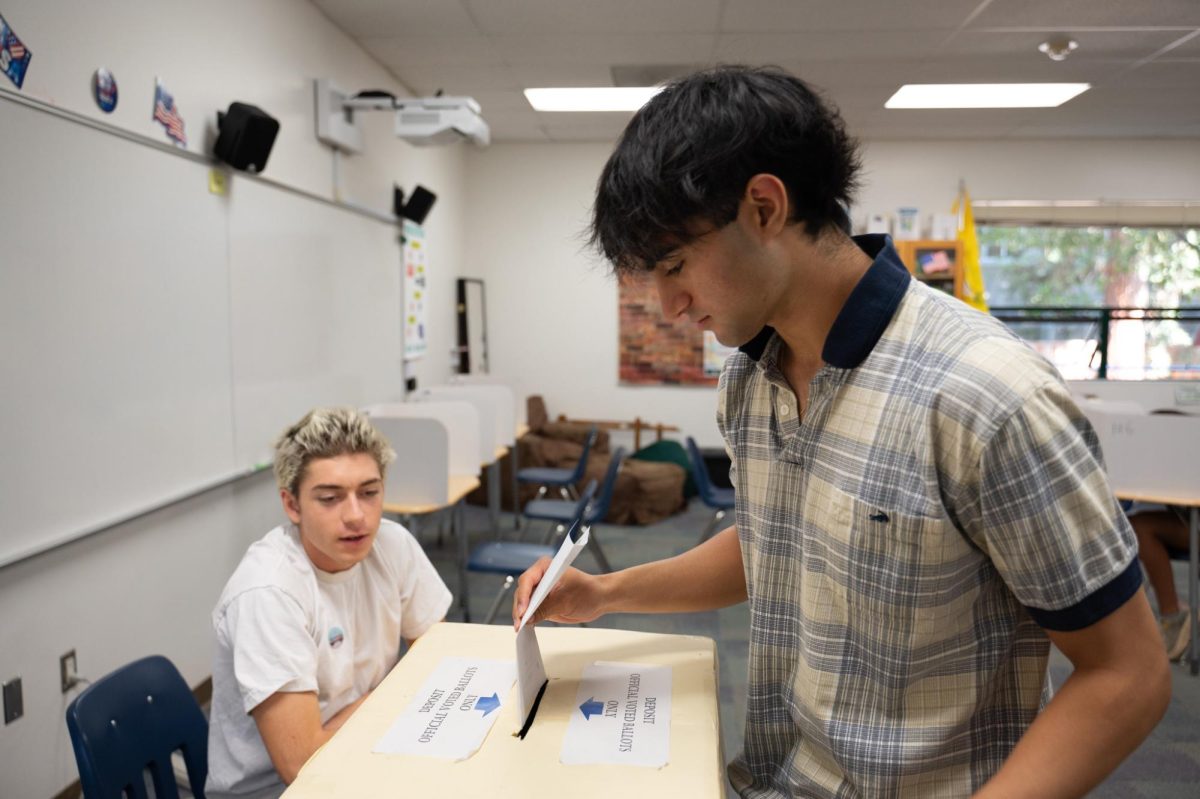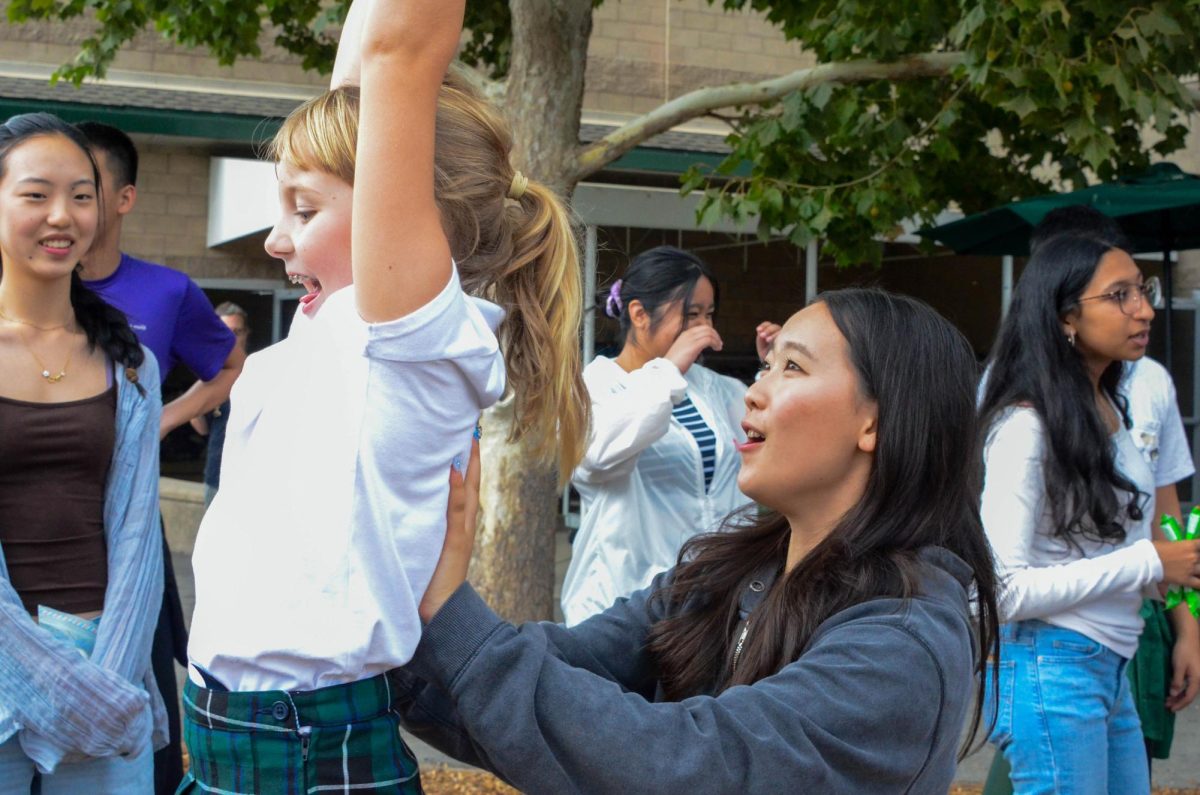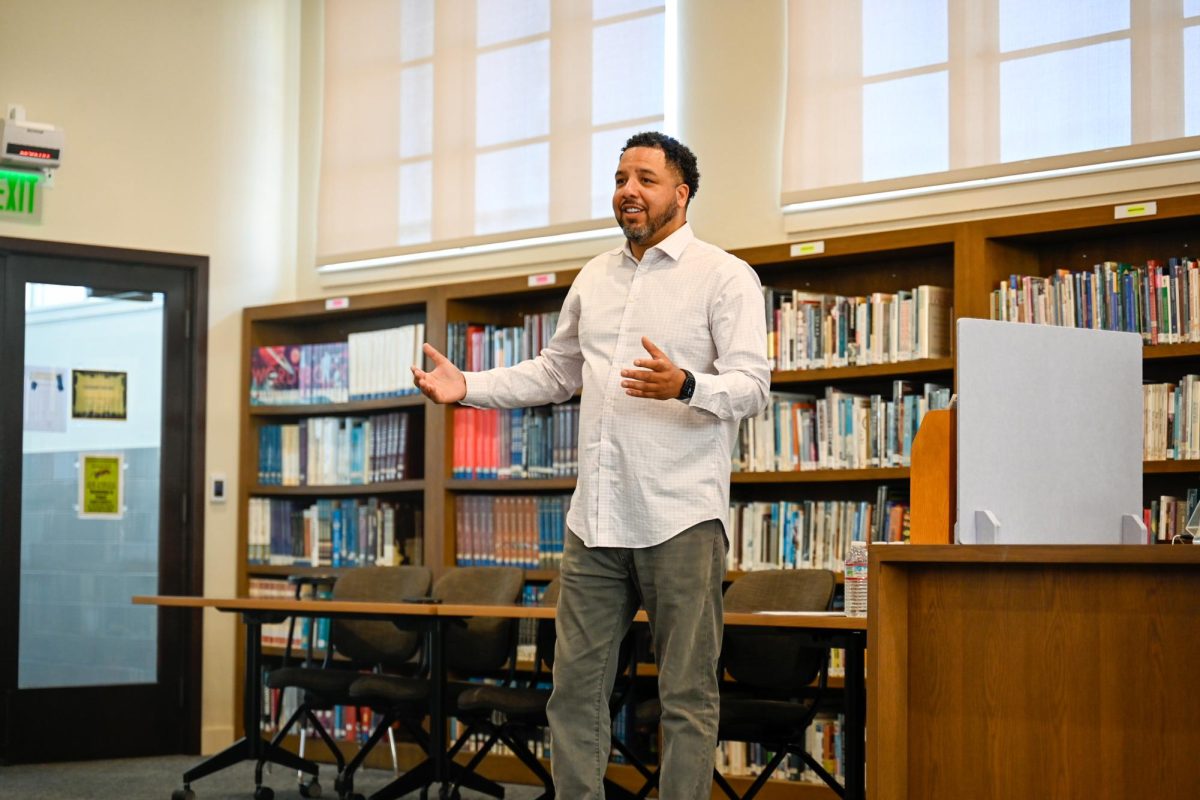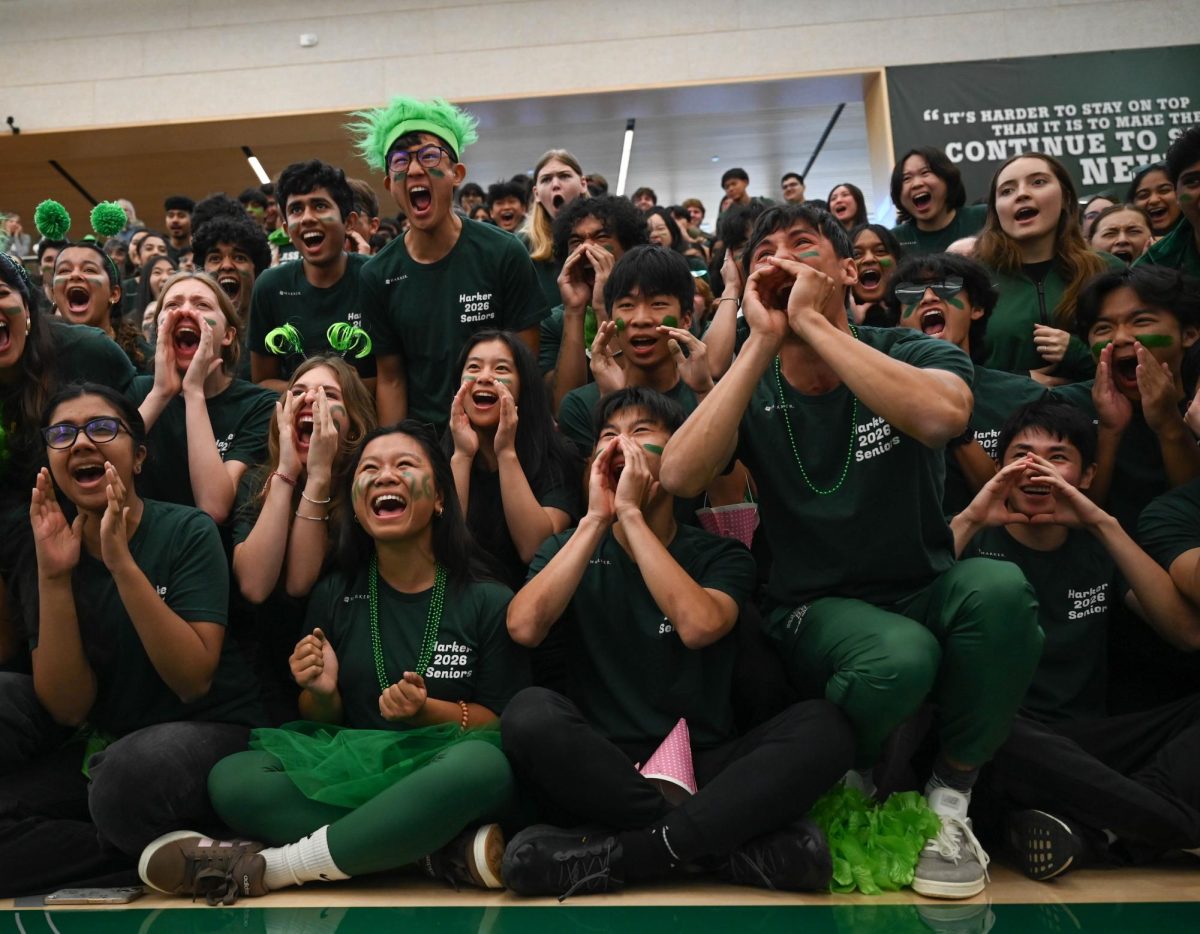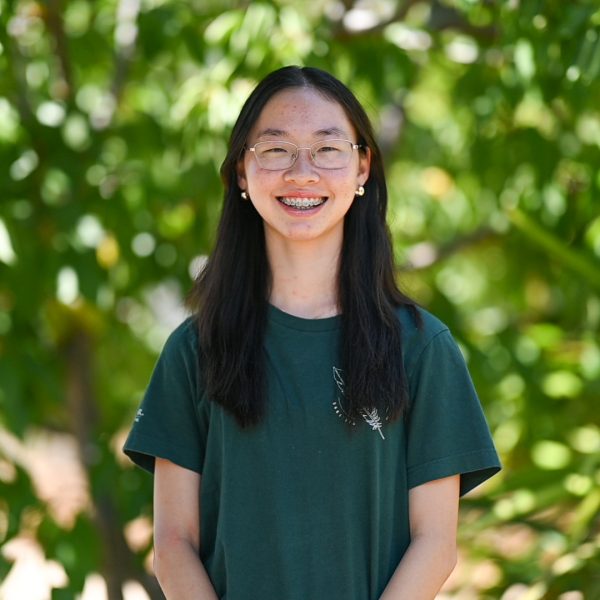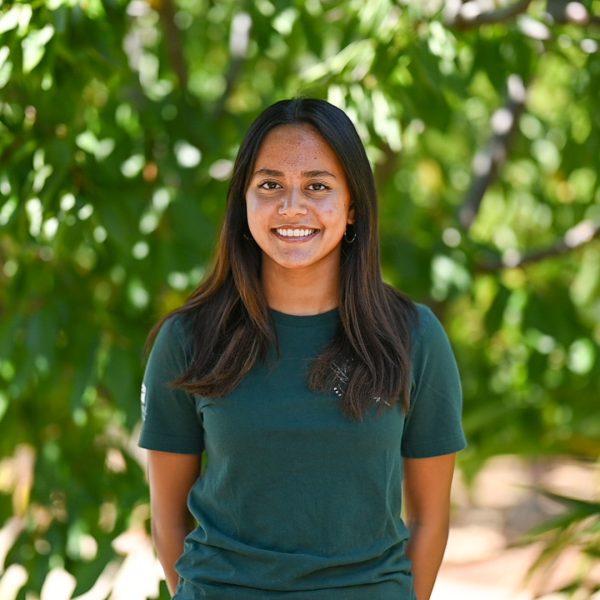50.7% of the student body voted in AP U.S. Government’s annual mock election on Tuesday. The seniors led voting turnout with 67.2% of the class voting, followed by the sophomores with 54.2%, the frosh with 41.2% and the juniors with 40.9%.
During presidential election years, Harker teams up with the California Secretary of State’s office, which runs a student mock election for the whole state. It is always restricted to students, aiming to increase youth civic engagement and motivate them to act on issues like environmental problems and school safety.
“We’ve seen the numbers for Gen-Z voters increasing over time, but they’re still way lower than the amount of voters in their sixties or seventies,” AP U.S. Government student Gia Emelie (12) said. “We need to encourage the youth vote because our generation cares about different issues and we have our own opinions and values that should be heard on the national scale.”
Polling booths were open from 7:30 a.m. to 3:30 p.m in AP U.S. Government teacher Carol Green’s classroom. The ballot consisted of the presidential candidates, California Senate candidates and 10 propositions. Students also voted for either an AP U.S. Government class period or Civics class period.
Based on a Schoology announcement released by Green, 69.2% of voters chose Kamala Harris and Tim Walz as president and vice president, and 68.9% voted for Democrat Adam Schiff as California’s senator.
Over 50% of students supported Propositions 2, 3, 4, 5, 32, 34, 35 and 36. Propositions 2, 4 and 5 would authorize bonds for public school facilities, climate risk protection and affordable housing, respectively. Proposition 3 would recognize the fundamental right of marriage between any sex and race. Proposition 32 would raise the minimum wage, and Proposition 34 would restrict spending of prescription drug revenues for certain healthcare providers. Proposition 35 would provide permanent funding for Medi-Cal healthcare services, and Proposition 36 would allow felony charges for certain drug and theft crimes.
To promote voter turnout, each AP U.S. Government class ran campaigns, competing against one another for votes. Strategies included obtaining faculty endorsements and promoting via social media campaigning accounts. Green’s period 2 AP U.S. Government class won with 26%.
AP U.S. Government student Eric Zhang (12) realized how difficult it was to engage students and convince them to vote.
“The question is, what tactics can you use to influence people?” Eric said. “There’s the danger of pushing so hard that you annoy people and they don’t want to vote for you. Or if you don’t push enough, how can you explore all these different avenues to reach the target people?”
By participating in the mock election, students can practice getting in the habit of voting and fostering a lifelong involvement in their community and civics.
“One of the big things about voting is that it’s really hard to fit it into your life depending on where you live and what you do,” Green said. “Building the habit of making a plan to vote and getting out to vote makes it a lot more likely that people will do it and it’s all less intimidating. A main objective for this mock election is just for students to practice being an adult and a member of our community.”




![LALC Vice President of External Affairs Raeanne Li (11) explains the International Phonetic Alphabet to attendees. "We decided to have more fun topics this year instead of just talking about the same things every year so our older members can also [enjoy],” Raeanne said.](https://harkeraquila.com/wp-content/uploads/2025/10/DSC_4627-1200x795.jpg)


















![“[Building nerf blasters] became this outlet of creativity for me that hasn't been matched by anything else. The process [of] making a build complete to your desire is such a painstakingly difficult process, but I've had to learn from [the skills needed from] soldering to proper painting. There's so many different options for everything, if you think about it, it exists. The best part is [that] if it doesn't exist, you can build it yourself," Ishaan Parate said.](https://harkeraquila.com/wp-content/uploads/2022/08/DSC_8149-900x604.jpg)




![“When I came into high school, I was ready to be a follower. But DECA was a game changer for me. It helped me overcome my fear of public speaking, and it's played such a major role in who I've become today. To be able to successfully lead a chapter of 150 students, an officer team and be one of the upperclassmen I once really admired is something I'm [really] proud of,” Anvitha Tummala ('21) said.](https://harkeraquila.com/wp-content/uploads/2021/07/Screen-Shot-2021-07-25-at-9.50.05-AM-900x594.png)







![“I think getting up in the morning and having a sense of purpose [is exciting]. I think without a certain amount of drive, life is kind of obsolete and mundane, and I think having that every single day is what makes each day unique and kind of makes life exciting,” Neymika Jain (12) said.](https://harkeraquila.com/wp-content/uploads/2017/06/Screen-Shot-2017-06-03-at-4.54.16-PM.png)








![“My slogan is ‘slow feet, don’t eat, and I’m hungry.’ You need to run fast to get where you are–you aren't going to get those championships if you aren't fast,” Angel Cervantes (12) said. “I want to do well in school on my tests and in track and win championships for my team. I live by that, [and] I can do that anywhere: in the classroom or on the field.”](https://harkeraquila.com/wp-content/uploads/2018/06/DSC5146-900x601.jpg)
![“[Volleyball has] taught me how to fall correctly, and another thing it taught is that you don’t have to be the best at something to be good at it. If you just hit the ball in a smart way, then it still scores points and you’re good at it. You could be a background player and still make a much bigger impact on the team than you would think,” Anya Gert (’20) said.](https://harkeraquila.com/wp-content/uploads/2020/06/AnnaGert_JinTuan_HoHPhotoEdited-600x900.jpeg)

![“I'm not nearly there yet, but [my confidence has] definitely been getting better since I was pretty shy and timid coming into Harker my freshman year. I know that there's a lot of people that are really confident in what they do, and I really admire them. Everyone's so driven and that has really pushed me to kind of try to find my own place in high school and be more confident,” Alyssa Huang (’20) said.](https://harkeraquila.com/wp-content/uploads/2020/06/AlyssaHuang_EmilyChen_HoHPhoto-900x749.jpeg)



